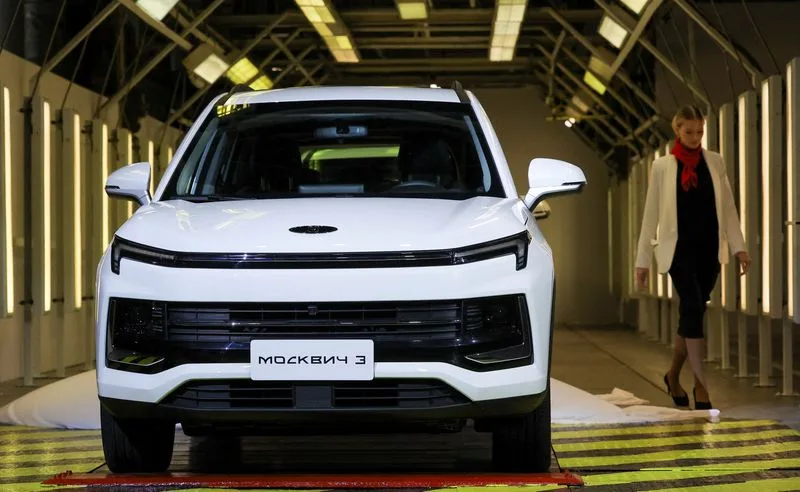Haydashning tiklanishi: Xitoy avtomobillari Rossiya avtozavodlarining tiklanishiga yetakchilik qilmoqda
China’s Influence on Russia’s Auto Industry: The Resurgence of the Moskvich

The relaunch of the classic Soviet-era car, "Moskvich", by a state-owned company last November was hailed as a symbol of Russia’s auto industry’s resilience in the face of Western sanctions. Moscow’s mayor, Sergey Sobyanin, voqeani yuqori baholadi, stating that many had thought it marked the end of the Russian car industry.
Biroq, the revival of the Moskvich also points to China’s growing influence over a crucial sector of Russia’s economy. The cars being produced at the sprawling Moscow Automobile Factory Moskvich in the southern part of Moscow bear little resemblance to the boxy models of the Soviet era. These sleek four-door SUVs incorporate engine parts and upholstery from China’s JAC Motors, visibly demonstrating China’s involvement.
According to anonymous sources cited by Reuters, "Moskvich" 3 model is assembled in Moscow using kits purchased from a Chinese partner, the JAC Sehol X4. Moskvich confirmed that its 3 and 3e models are produced using large-unit assembly, wherein the cars are built at a foreign manufacturing plant and then finalized in Russia. The company acknowledged working with a “xorijiy hamkor,” though they didn’t explicitly confirm the partnership with JAC.
Moskvich plans to increase production localization gradually, aiming to incorporate more local suppliers with Russian components. The company hopes to implement a second production phase later this year or early in 2024, Moskva zavodida payvandlash va bo'yashni o'z ichiga olgan.
Chinese carmakers have been capitalizing on the departure of Western players that once dominated the Russian market before the Ukraine invasion. Import data from analytics firm Autostat reveals that Chinese cars now account for 49% ning Russia’s market, compared to just 7% iyun oyida 2021. This market share has led to substantial profits, bilan Chinese carmakers’ eksport of passenger cars to Russia reaching nearly $4.6 billion in January-June 2023, including exports worth over $1 billion in June alone, according to Chinese customs statistics.
Bundan tashqari, Chinese firms are making inroads in Russia by assembling vehicles in factories previously owned by European, Japanese, and U.S. carmakers. Reuters reports that six such factories are now producing Chinese models or have plans to do so. These factories collectively have an annual capacity of around 600,000 avtomobillar.
With China’s growing dominance in the Russian auto industry, it is clear that the relationship between the two nations is significantly impacting Russia’s car market and shaping its economic landscape.

 Xitoyda avtomobil
Xitoyda avtomobil